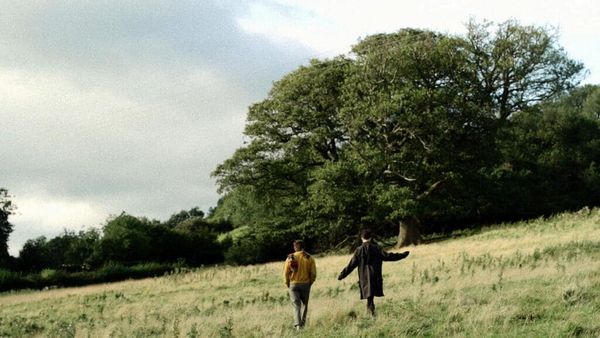Eye For Film >> Movies >> Hide And Seek (2013) Film Review
Hide And Seek
Reviewed by: Jennie Kermode

There are, broadly speaking, two types of film out there about multiple-partner relationships: those about cults, in which everything spirals inevitably toward violence and destruction, and those in which a man gets together with two women and the emotional aspects of the situation take second place to soft porn. We occasionally also get films about the tragedy of women in far off places being forced to marry already-married men, and films in which men want to open up their relationships but women are unhappy. Joanna Coates' Hide And Seek comes as a breath of fresh air.
Charlotte, Simon, Jack and Leah have all, for one reason or another, decided to turn their backs on their old lives and move together to a farmhouse in Wales. Unlike in recent films like The Sex Of The Angels which use responses to cheating as a means to explore romantic complexity, everything here is completely open from the start. They all know what they want to do and how they want to live. They're just not sure how to get there. There's a difference between talking about it and pressing flesh to flesh. So they focus, to begin with, on the domestic, the ordinary, and through this they begin to develop the human connections that will, ultimately, become just as important as the sex.

If parts of Hide And Seek seem self-conscious, that's entirely in keeping with how the characters relate; it takes time to break down barriers and establish trust, and during this time, of course, they are doing the same thing with the audience. In the farmhouse, one room is hung with a big red curtain, and there theatrical performances take place in the evenings, a deliberate nod to performativity in relationships, a studied artificiality which gradually breaks down into something real. Yet as our protagonists come to feel more secure, these performances become dangerous. The line between the conventional and the imaginary has been breached. Now anything could happen, and this adds extra pressure to a situation already dependent on complex patterns of trust.
The real strength of Coates' film, and what makes it stand out, is the way in which she uses this to explore universal issues. Gendered expectations, loneliness, the ease with which what feels like love can turn into a desire for revenge - all are present, though not always in the ways one might anticipate. There are questions about the notion that a relationship needs to be going somewhere, implied interrogation of the low value often placed on happiness and, perhaps most significantly, a stark portrayal of female desire. This latter is achieved partly through photography that lingers as much on male bodies as female ones, something that is likely to shock audiences (and may complicate the film's certification) but which is, ultimately, only presenting the world as it is. There is a lot of sex in the film and a similar shift away from standard cinematic narratives occurs there: we see whole bodies interact with each part sensitive, each part significant, rather than the old in-out in-out that is both familiar and distant from most people's real experiences.
A modest film in may ways, yet quietly revolutionary, Hide And Seek is an important contribution to contemporary dialogues about sex and romance. It's also a highly skillful piece of filmmaking, juxtaposing the mundane and the sublime to conjure up something approaching the real stuff of romance.
Reviewed on: 21 Jun 2014














